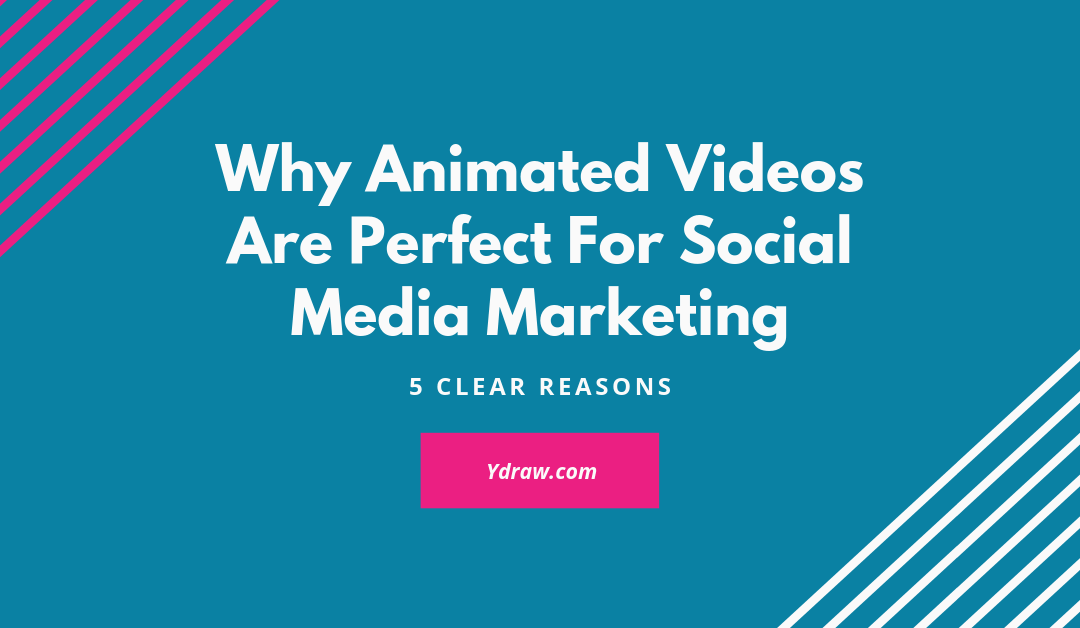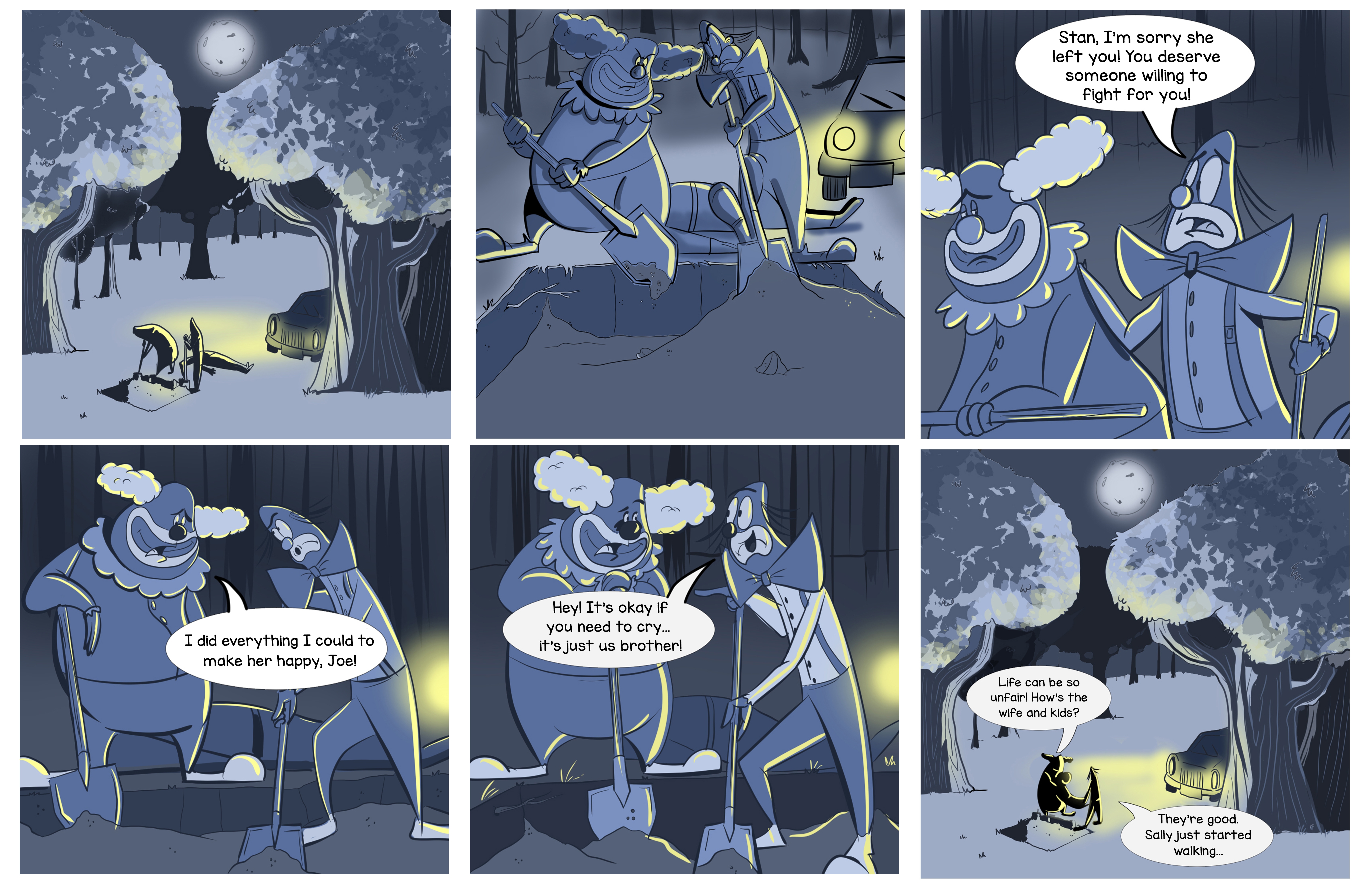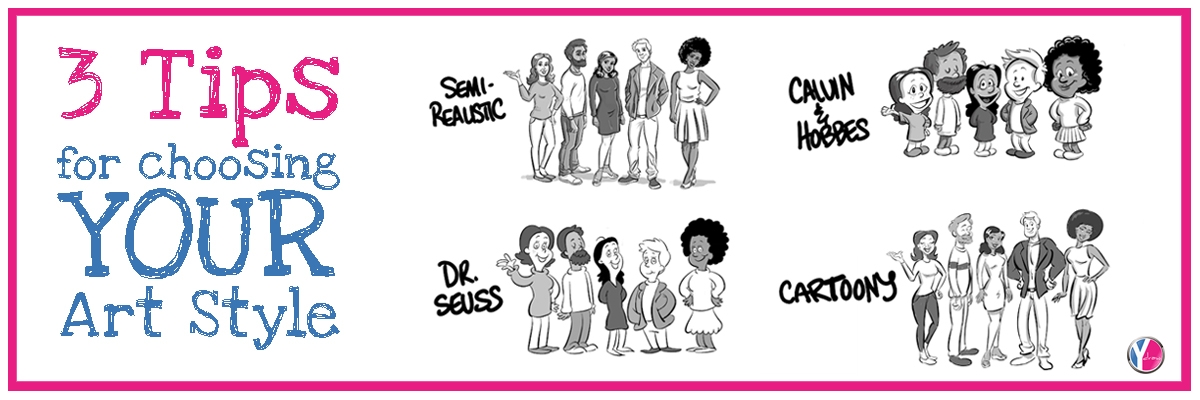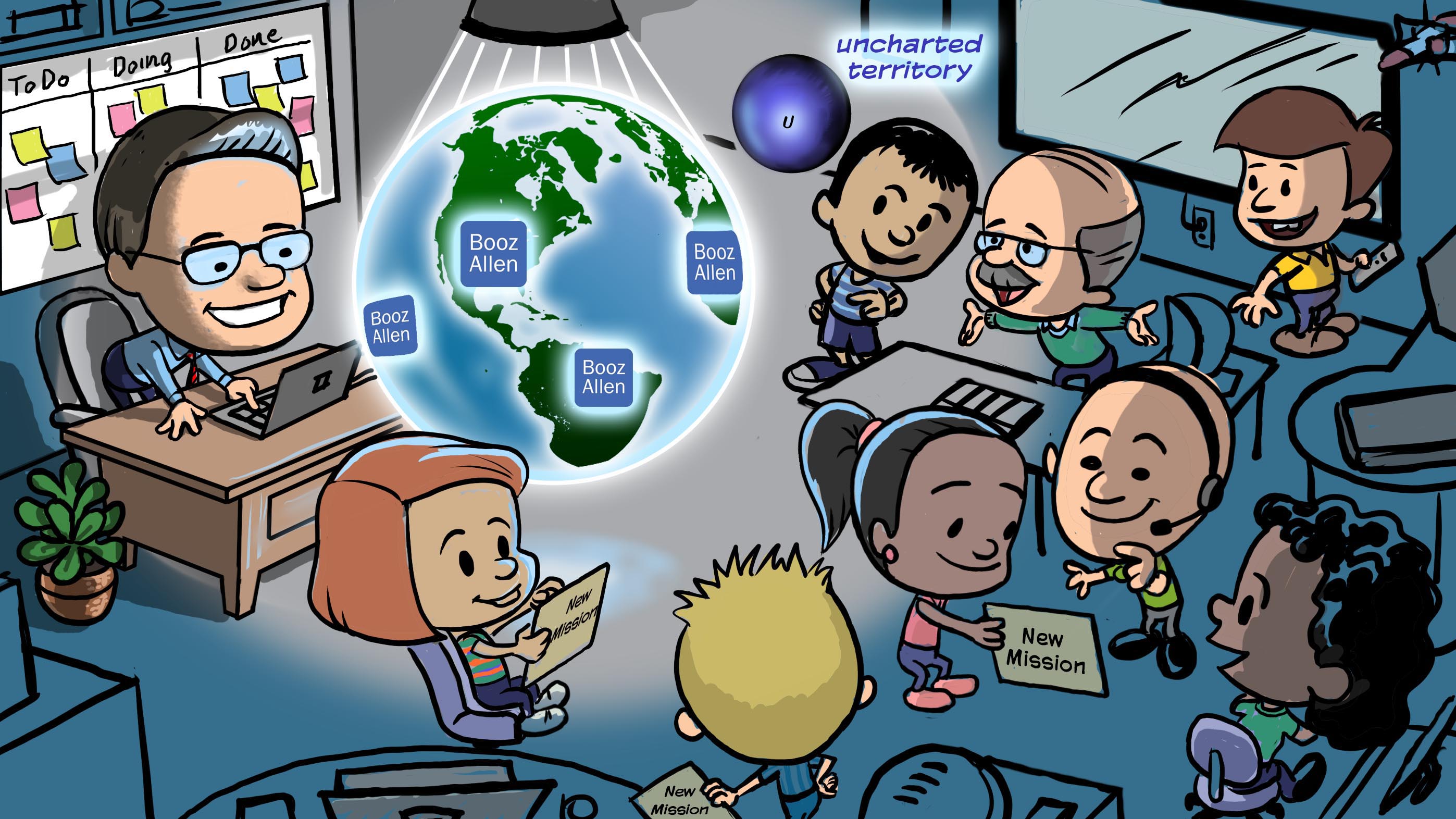
by Jace Vernon | Jul 17, 2019 | Animated Whiteboard Videos, Animation Video, Marketing, Social Media Marketing, Video Marketing, Whiteboard animation
Animated videos work wonders for social media marketing.
How? First off, remember what the 5 goals of social media marketing are: (1) increase brand awareness, (2) enhance public relations, (3) build a community of advocates, (4) research and development, and (5) driving sales and leads.
Animated videos address each one of these goals perfectly.
How Do They Increase Brand Awareness?
An engaging animated video with your brand’s colors and logo woven throughout sticks in people’s brains. The video delivers an extra-potent dose of memorability where your brand is concerned. It’s much easier to remember a particular brand if it’s associated with fun visuals as opposed to a stand-alone logo on a landing page or an article full of text.
Using animated videos also sets you apart from the ocean of business Facebook pages that are constantly posting uninteresting company photos and updates. If you’ve got a compelling animated video that autoplays on someone’s feed, chances are they’re gonna watch it. This will make your brand more interesting than your competitors.
How Do Animated Videos Enhance Public Relations?
A high-quality animated video shows that you’re serious about delivering your message efficiently. It shows the public that you care about being understood. Even fun or silly videos add an element of legitimacy and professionalism to your brand.
Also, social media is where you find the most accurate info regarding how the public feels about your company. Browsing comments from a meme you shared off someone else’s page is fine. But when you have original, animated content, the percentage of positive feedback is higher. Animated videos lead the public to view your organization as stable and confident.
How Do Animated Videos Build A Community of Advocates?
When someone shares your video, a seed of loyalty is planted. That action proves it spoke to them to the point where they wanted others to experience what they did. Whether your animated video made them laugh, cry, or think, them sharing it is a sure bet that you’ve stuck in their brains. This is the first stage of brand loyalty.
Animation has a way of making people feel comfortable. Helping your audience feel comfortable with your business is an important step toward turning them into an advocate.
How Do Animated Videos Promote Research and Development?
One of the best things about using videos in social media marketing is how easily traceable they are. You can combine the analytic data of both Facebook and the video hosting platform for your benefit. This makes gathering data and putting it to future use so easy.
There’s also evidence suggesting that for businesses, short, animated videos receive more engagement than live-action ones. This is because the nature of animation allows complex ideas to be more easily explained. More engagement means more data which leads to more refined processes.
Plus, they’re cheaper to produce than live-action videos. This leaves you with more marketing dollars to make more videos or put toward further research and development.
How Do Animated Videos Drive Sales and Leads?
Animation is less likely to come across as intrusive marketing. This means that viewers are more likely to get hooked within the first few moments and watch the whole thing. This does wonders for conversion rates.
Why are they less intrusive? Because animated videos are fun, even when they’re talking shop. Being entertained and persuaded at the same time is an age-old marketing tool, and it’s all over social media. Animated videos exude an element of fun, making the purchase more appealing.
There’s also something nostalgic about animation, and nostalgia is huge in our culture right now. It’s a very effective marketing tool, and animation is a great way to tap into that.
Conclusion
If you feel like your social media marketing is lacking and you haven’t commissioned an animated video of some kind, we highly recommend you consider it. It’s worked wonders for our clients’ social media efforts. There’s no reason it won’t work for you.

by Ydraw | Sep 5, 2018 | animation, Animation Production, Animation Video, Customer Service, Video Strategy Guide, Ydraw

If you fail to plan, you plan to fail. Take any man-made wonder for example. The Great Pyramids, Eiffel Tower, Empire State Building, Sistine Chapel etc… all of these remarkable accomplishments had to be mentally and visually created before being accomplished. In other words, someone had to think these things up before they were made. I believe any artist, whether they be sketching or preemptively visualizing, goes through a conceptual creative process. The world literally looks the way it does today because of this process being successfully actualized through creators minds over the course of thousands of years.
Not in all cases, but in most, the success of any art form is derived heavily from the conceptual creative process. This is why this process is so critical when trying to create an effective end result, whether that be constructing a building or styling someone’s hair. Whenever I start a new visual project, I like to do several things. First I like to sit down and brainstorm ideas, often times with the client. This helps me gain a better understanding of what needs to be included in the final product. Sometimes clients aren’t sure what they want so be prepared with visual ideas and be sure to ask lots of questions. Second I like to add fuel to the “creative fire” by gathering and absorbing materials that inspire me. For example, listening to music and gathering ideas from other types of media. Everyone is inspired by different things so this may be different for everyone. And third, I usually create a rough storyboard containing visuals and descriptions of what I plan to create.
These three things are in no way an exhaustive list, every creator is different. However, at Ydraw we have found this process to work really well for our videos. As you start the creative process you may discover that some steps work better for you than others so make sure to experiment and find what works best for you. However you may decide to carry out your own conceptual creative process, do it! By taking the time to plan out your next creation beforehand, you will increase the effectiveness of the final product.
Written by Brenden Nelson -Ydraw Video Animator
by Ydraw | Jul 26, 2018 | animated explainer video, animation, Animation Production, Animation Video, Creative Marketing, Explainer Video, explanation animation, How to pick a video style, Marketing, Motion Graphics, Video Marketing, video online marketing
So what are Motion Graphics and why should you use them? “Motion Graphics” is just a fancy term used to describe a mix between graphic design and animation. Most motion graphic videos you will see these days are purpose driven with the goal of presenting information to the viewer.
There are many reasons why you should choose to advertise or explain with Motion Graphics, the biggest reason being emotional response. Video creates an emotional connection with the person watching far quicker than any other content platform. Did you know that using video on your landing page could increase conversion rates by as much as 80%? Animated marketing videos in particular are a very useful tool to deliver your business idea in just a couple of seconds.
Another reason why Motion Graphics are the way to go is because it is perfect to explain a complex or abstract idea in a very simple, fast and compelling way. With an Internet attention span continuously decreasing this is a very valuable point to mention.
There are literally no limits when it comes to the creative aspect of Motion Graphics. You want a flying monkey in your video? Here’s a flying monkey. You want a man scuba diving off the coast of Bermuda with Great White Sharks? No problem the video can be created quickly and on a budget without the hassle of creating expensive sets and hiring film crews/actors.
Motion Graphics are extremely effective because we are all visual learners. People learn and understand much more efficiently when they are taught with the help of drawings, diagrams, charts and different designs.
If you are trying to determine how to create your next marketing video just remember, Motion Graphics is the way to go. There are literally no limits to what you can show with Motion Graphics. But more importantly, your audience will connect with the information or product you are presenting quickly and effectively.
Check out one our latest and greatest Motion Graphic videos below:
by Ydraw | Jul 18, 2018 | animated doodle videos, animated doodle videos, animated explainer video, Animated Whiteboard Videos, animation, Animation Production, Animation Video, Authenticity, Creative Marketing, Emotional Connection, how to make a whiteboard animation, Humor, Marketing, Story Telling, Video Content, Video Marketing, video online marketing, Whiteboard animation, Whiteboard Video, Ydraw
What makes things funny? Our own sense of humor isn’t always funny to the guy sitting next to us. So, let’s look at a few simple principles used in Improv to make your video funny to all of your audience!
First and foremost, there is TRUTH in COMEDY! The funny comes from the experiences we have all had in our lives. Think about sitcoms, why do they work? They take something so simple, like everyday life and exploit it. The ups and downs of dating and heartbreak or fighting for that perfect job, only to find out that it isn’t so perfect. But where does the comedy come from?
The funny comes from the unexpected. The moments of truth. It comes from showing not telling. We have all been there…the time in the grocery store when two people are having a conversation in public and you can’t help but listen, even though you know the topic should have probably been left at home…yeah that stuff.
So let’s take a look at this funny scenario….
We see two shadowy figures digging holes in a graveyard. It’s dark, but we can see that there’s a body behind them. It appears that they are covering up a murder! The scene is quite grim and creepy… so how is this funny? The car lights flicker on and we get a better look of the situation… only to reveal…two clowns? Okay, now this is way more terrifying, but their must be more to the story… so as we get closer, we overhear…
Clown 1:“Look Stan, all I’m saying is I’m sorry she left you. You deserve better!”
Clown 2:“You know Joe I just don’t understand, I did everything I could to make her happy.”
Clown 1:“Hey, you know, it’s okay if you want to cry. It’s just us brother.”
Clown 2: (in tears) “Life is just so unfair! But hey how’s the wife and kids?”
Clown 1: “They’re real good. Sally just started walking…”

The conversation continues as they are digging a shallow grave wearing their clown costumes. So, we know they are clowns, we know they are friends, and we know what happened…but they don’t have to tell us that they murdered this guy. We just know! If we focused on the body, or what happened the scene would drag on, the audience would get board with details and information that they don’t need.
This scenario leads us to the truth of comedy…Relatability!
Think about how you feel when you pop bubble wrap. Did that put a smile on your face just thinking about it? How about when you scoop peanut butter from a freshly open jar, yeah there’s that satisfaction face. See how easy it is to relate? All you have to do is capture a moment when someone has used your product in such a way that it brings a clear feeling to your audience.
Just remember that comedy is subjective, but so is being bored out of your seat. By using these tried and true principles of Improv Comedy, you can help your audience laugh at the unexpected, learn about your great product/service and keep them interested and wanting more.
So, let’s get out there and take a fresh approach to comedy, and whatever you do, if you see two clowns walking your way…RUN!
by Jace Vernon | Jun 13, 2018 | animated doodle videos, animated explainer video, Animated Whiteboard Videos, Animation Video, Art Style, Customer Service, How to pick a video style, How to pick an art style, quick draw video, scribble video, Training Videos, Whiteboard animation, Whiteboard Video

Everyone wants a viral video. In fact, that’s what most of our clients ask for when they come to us. But, when it’s time to look at our Art Styles page – many clients panic and think,
“What if I choose the wrong one?”
That’s why we are going to talk about the difference that art choice can make to your video and a few things to think about when choosing yours. Because although we pride ourselves on working with the most talented artists in the industry – that doesn’t mean that every one of them is the best choice for your project.
Let me tell you a short story.
Once upon a time, a client named Booz Allen came to us for their first whiteboard animation video. They are a serious, respected firm with very serious, important clients. Even though this video was internal, they wanted it to be serious, professional, and aspirational.
But, there was just one thing.
Their Scriptwriter had a gut instinct – what if we juxtaposed the informational tone of the script with a fun, unexpected art style like Calvin & Hobbes to create a surprise effect?
Well, Booz Allen decided to go with Semi-Realistic instead. Here’s the first scene from the first set of images delivered by their choice of artist:

This works. It gets the job done. However, Booz Allen isn’t in the business of just getting the job done. So, they made the command decision to switch artists (for a small fee).
Here’s the first scene again – with the exact same script – rendered in the Calvin & Hobbes style:

Now THAT’s memorable!
Just using a different art style brings the script to life in a completely new way.
In fact, this style was such a huge hit –they have made dozens of videos since in this style.
This is a perfect example of how the right art style can truly elevate a project.
So, what should you consider when choosing the art style for your project?
Here are 3 things to consider:
- TONE/MOOD:
What is the tone of your script – what feelings does the voiceover evoke? And, what do you want the mood to be of your video? Some examples might by light-hearted and humorous. Other scripts are heavy, covering more serious subject matter. Or, maybe you just want an approachable, informational tone. For example, this video we made for Volunteers of America was designed to be beautiful, moving and inspiring. Using our YPaint style, the images are digitally revealed and we incorporated an animated fine line connecting them to support this vision:
- ELEMENT OF SURPRISE:
Now, just because your tone and mood are serious – doesn’t mean your art style has to be! By using an unexpected pairing, you create the element of surprise! Examples of this could be the Booz Allen video – which pairs a fun, youthful art style with serious internal subject matter. Or, take a look at this video for the marketing company, Ribyt. They used color to create an element of surprise, by staying all B&W except for their brands green.
Another way to create an element of surprise is to use a mixed-media approach, by combining different types of video footage. In this case, Vital Smarts used a mixture of live video and whiteboard animation:
- AUDIENCE:
Sometimes the right art style is the one that will appeal most to your audience.
Ask yourself, “What would my target consumer want to see?”
After all, you’re making this video for them, right?
That’s exactly what our client, Wilson Electronics, had in mind when we created this short, one-scene video in our Cartoony style to capture the feeling that people have when they realize their cell phone signal hasn’t been working:
BOTTOM LINE:
Be willing to think outside the box when choosing an artist!
The right art style will pair perfectly with your script and grab the attention of your audience.
We love working with our clients to discuss options, send samples, and help guide you to choosing the perfect art style for your project.
by Ydraw | Jun 6, 2018 | Animation Video, Creative Marketing, Emotional Connection, Explainer Video, Gut Feeling, Marketing, ted talk, ted talk summaries, video, Video Content, Video Marketing, Video Scribing, Whiteboard animation, Whiteboard Video, Writing a Script, Ydraw
Lets face it…
At one point or another, each of us have had that gut feeling that defies the facts and numbers. When everything looks right on paper but for some reason it just doesn’t “feel” right.
So where does that feeling come from?
Contrary to what you may be thinking, it actually comes from the BRAIN!
Simon Sinek, a British-American author and motivational speaker, does a great job explaining this in his book called “Start with Why.”

He talks about the two parts of your brain
The Neocortex or “the what” and the Limbic or “the why”
The Neocortex being responsible for our rational and analytical thought and language and the Limbic being responsible for our feelings, behavior and decision making. He also talks about how our Limbic brain has no capacity for language.
What this means is the part of our brain that DRIVES BEHAVIOR, our Limbic Brain, doesn’t even understand the vast amounts of information you are throwing at it. It just hears BLA BLA BLA!
So how does knowing all this, help make better videos?
Studying the human brain helps us understand what motivates our audience leading to lifelong business.
Like Simon mentions, when we first communicate the “why” and get our viewer believing what we believe, we establish an emotional connection. After that connection is formed, it doesn’t really matter what we have to offer them or how we have it because “people don’t buy what you do they buy why you do it.”
You can explain to your viewer till your blue in the face what all of the facts, features, benefits and details are of your company but at the end of the day, if they don’t trust you, they aren’t going to click on your website or set up that free consultation or even think about contacting you.
So before smack your viewers in the face with 7 million reasons why your company is exponentially greater than your competitors….
Ask your self WHY you do what you do. Ask yourself if you actually need all that nitty gritty, technical jargon in your video. Ask yourself if you are selling a product or selling an idea.
Understanding the role of the emotional unconscious and how it plays a role in the decision-making process of your audience is critical in making your video successful.
Remember…. “People don’t buy what you do they buy why you do it.”







